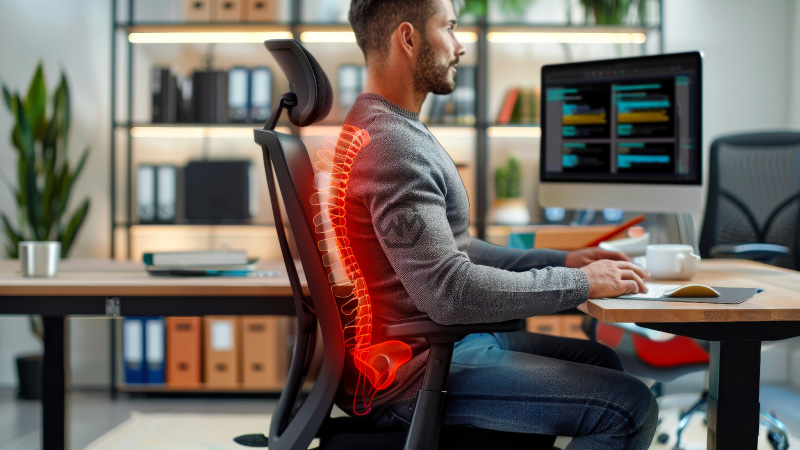- Back pain now affects over 600 million people globally and is projected to rise steeply by 2050.
- Sedentary lifestyles, poor posture, and neglected self-care are driving this epidemic.
- Simple, daily exercises can reduce pain, boost mobility, and protect long-term spinal health.
Back pain has quietly become one of the most significant health burdens of the 21st century, transcending age, gender, and occupation.
Beyond posture, the pain puzzle often includes overlooked factors like skipping warm-up stretches, lifting with incorrect form, or failing to rest properly between workouts.
Modern Living, Aching Backs: Reversing the Rise of Chronic Spine Pain
Unlike acute injuries, back pain caused by inactivity builds up gradually—often going unnoticed until it becomes persistent. The danger lies in its subtle onset: many people shrug off stiffness or discomfort until it begins interfering with their everyday life. Studies now highlight that sitting for extended periods, even with good posture, can restrict blood flow, compress spinal discs, and weaken core muscles.
Remote workers and students are particularly vulnerable. Makeshift home offices, long screen time, and lack of movement breaks compound the risk. According to occupational health specialists, even “good” posture can become harmful if sustained for too long without movement. Regular position changes, short walks, and standing desks can be powerful first steps in reversing the damage.
Exercise is an effective, drug-free strategy to prevent and relieve back pain. Low-impact moves like glute bridges, bird-dogs, and pelvic tilts activate deep muscles that support the spine. Daily repetition of these exercises, combined with focused breathing and proper alignment, can ease existing discomfort and prevent future flare-ups. These routines don’t require a gym — just commitment and consistency.
But not all back pain is mechanical. Underlying conditions like sciatica or disc injuries may require medical intervention. Pain that radiates down the leg, causes numbness, or doesn’t subside after basic self-care should never be ignored. Listening to your body and seeking timely advice can make the difference between recovery and long-term impairment.
Back pain may be widespread, but it doesn’t have to be inevitable. With awareness, movement, and smart daily habits, you can reclaim a pain-free back and a better quality of life.
“Take care of your body. It’s the only place you have to live.” — Jim Rohn



